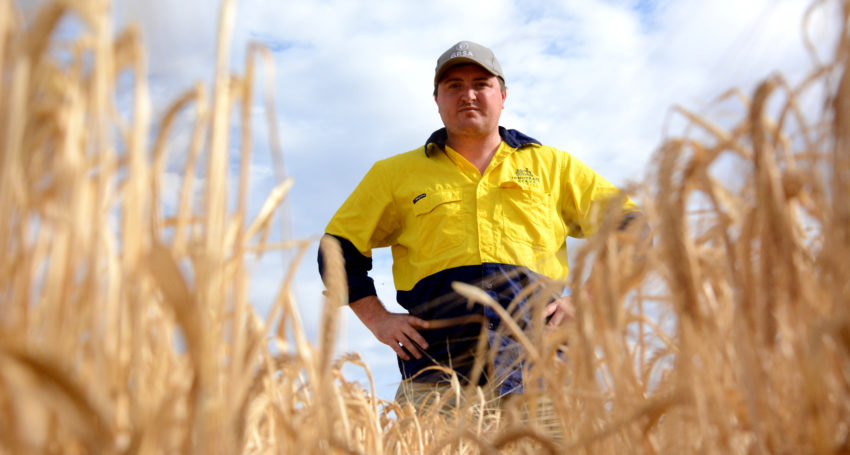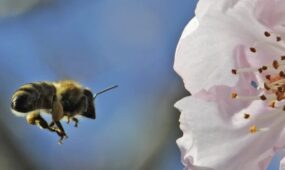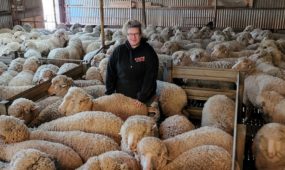Growing optimism for Aussie grain farmers
Primary Industries
Opening rains boost traditional Anzac Day start to grain seeding season in South Australia.

Sign up to receive notifications about new stories in this category.
Thank you for subscribing to story notifications.

South Australia’s grain country is set for seeding around the traditional Anzac Day start date with farmers seeing the best season opening rains in several years.
Early pasture, canola and legume seeding already has been happening across the state over the past few weeks and there is cautious optimism about weather bureau reports forecasting a better year for rain.
However, COVID19 and national demand is forcing farmers to focus more on forward planning to ensure important fertiliser and chemical supplies arrive on properties.
“The state is starting the year with reasonable moisture levels and some good rain for most of the state,” Grain Producers SA chairman Wade Dabinett said.
“It’s still definitely patchy and some areas are as dry as chips but generally entering this season we’re starting with more subsoil moisture.
“The Riverland was one of the hardest hit last year, some struggled to get 50mm for the year, they’ve already had 100mm this year.”
Research by Rabobank released this week showed optimism among farmers about a favourable season but this had been tempered by concerns imported chemicals and fertiliser supplies may be restricted by the coronavirus pandemic.
The Rabobank warnings have not affected early supplies for planting in South Australia, Dabinett said.
But Dabinett, who farms at Parilla in the state’s Murray Mallee, is already ordering inputs needed once crops grow, saying the state needed to plan earlier as demand increased.
He warned of a double whammy for rising demand.
Drought-stricken Eastern states have this year experienced good opening rains and were coming back on line to soak up stock – while some suppliers relied on imported products that could be disrupted by the Covid-19 pandemic.
He said Australian fertiliser and chemical supply companies had moved to carrying lower levels of stock in Australia than in the past as businesses consolidated or changed their business models.
Now there was more demand it was taking longer for stock to arrive, Dabinett said, but he believed there was enough supply for farms.
“The East Coast farmers have been in drought two, three, four years and all of a sudden they are coming back in, input (fertiliser and chemicals) is being diverted out of SA and back up the East Coast,” Dabinett said.
“Coronavirus probably comes in over the top of that event and there are disruptions to the supply chain.”
To date, Dabinett said South Australian farmers had managed to access important inputs but planning and ordering had been brought forward a few months.
Farmers had to order earlier and possibly accept alternatives to preferred products.
Dabinett said some suppliers made their own product in Australia and had more control of supply but others purely relied on imports.
Rabobank agricultural analyst Wes Lefroy said the bank’s research indicated adequate supplies of agricultural inputs – including urea and agrochemicals – would be available in most instances.
And in cases where there were supply shortages, alternatives or workaround strategies could be adopted including using more precision agriculture practices, such as plant and soil testing and variable rate application.
“While global farm input supply chains are operating at near-full capacity, the risk of interruption still remains high,” Lefroy said.
“The source of this interruption may be at production, or moving the product by road or at the port.”
Lefroy said Australian growers have generally been able to access adequate stocks to begin seeding but imports of the nitrogen product urea for winter and spring application is causing concern.
“We are now heading into the key importing period for urea in Australia,” Lefroy said.
“On average, 60 per cent of our yearly imports of urea arrive on Australian shores during the April to July window. And Australia typically imports 90 per cent of its total urea requirements, so we are heavily reliant on global supply chains.”
To date, Lefroy said, production and logistics were operating with little interruption in Qatar and Saudi Arabia – Australia’s two largest sources for urea imports.
“And, in a scenario where supply was interrupted from the Middle East, sufficient alternative urea would be available from China, Indonesia and Malaysia – with whom we also have a strong trading history,” he said.
Jump to next article



